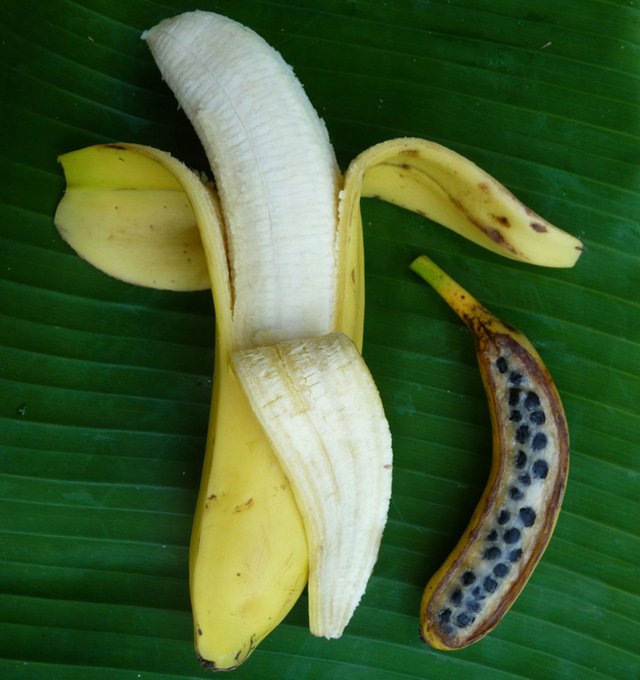
The domestication of the banana is a fascinating process that has transformed the fruit from one full of seeds to a seedless fruit that develops without the need for pollination. This process took place in the humid tropical belt that extends from India to the Solomon Islands, the natural range of the wild species of bananas belonging to the genus Musa.
The earliest archaeological evidence of domesticated bananas has been dated back to at least 7,000 years ago in Papua New Guinea. The ancestors of cultivated bananas were domesticated from a small subset of wild species, with Musa acuminata and Musa balbisiana being the best known ones. The genetic signature of these wild species is found in the vast majority of cultivars known today.

The potential to produce parthenocarpic fruits, the ability to produce a fruit in the absence of pollination, has been traced to genes present in Musa acuminata. Domestication for edibility most likely began with farmers transplanting offshoots of plants that were edible by virtue of having less seeds and more pulp. However, since these plants were still fertile, they continued to mate with other fertile banana plants.
While still fertile diploid bananas continued mating and produced triploid bananas. Fertile diploid bananas went on to produce triploid plants when one of the diploid parents normally passed on one copy of its genome, while the other contributed both copies. These triploid bananas belong to three genome groups: AAA, AAB, and ABB.

Sterility is most likely due to a combination of structural and genetic factors, including matings between distant relatives and farmers preferentially propagating plants that produced fruits with the least seeds, which might have selected for genes that contribute to sterility. From that point on, further diversity has been produced by somatic mutations in the rhizome’s lateral buds, which develop into suckers, and ill-defined epigenetic processes.
New cultivars are created by growers propagating somatic variants that exhibit desirable traits. However, because these are nearly genetically identical to the cultivar they are derived from, they do not contribute to genetic diversity. This is why, in banana, cultivar diversity is not a good proxy for genetic diversity.

In Africa, the Plantains and the East African highland bananas are two large groups of bananas that have diversified. These groups are the secondary center of diversification for bananas. In conclusion, the domestication of bananas is a complex process that has transformed a fruit with seeds into a popular seedless fruit that is enjoyed by people all over the world.

Leave a Reply